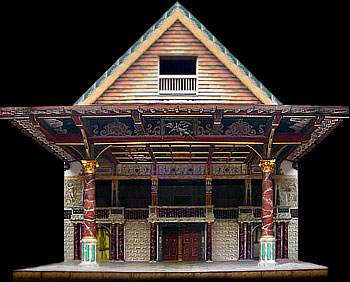Stage Format

Your story continues.
We've included links to free Windows software & many other alternatives...They're also posted in another area here...but I want you to have the links available for formatting in most software.
"Yes, there is a proper way to format your script. It's just that people don't quite seem to agree what that is. What follows, however, is a pretty good format that most manuscripts seem to follow these days. This was prepared for you with love and passion from Brian Thorstensen"
http://online.sfsu.edu/rconboy/submitting.html
I've also added here the Instructions for doing this in Word. In that document, I've formatted it using the correct template. You can save the document as a Test document, and use it for your own writing. Just replace the text I have in the document. You'll need to download the file when prompted.
Here's the link to that document:
Open Office? Here's a link that will take you to the infromation of how to obtain, install, and use the template for the Stage.
Writer Duet is Cloud based & Free Software for Scripts. WriterDuet features real-time collaboration, online/offline writing, and infinite revision tracking. As well, it has A Stageplay template.
Just sign up, NO NEED to purchase the software in order to use it. And check out their Stageplay Template. It works really well

YOUR STAGEPLAY:
It
began with the idea; with your proposal. Other writers in your group responded
to your idea & you offered your views on their ideas. Now, you've had
enough time to think of story, characters and something about your
scene-settings and time period.
Then
Sound arrived & with it. Now we add other elements inscuding something the other media don't - because we have a theatre and a stage, we may creat perspective by actually adding what the audience is providing real time in real time, and genuine perspective. Motion & stillness, light and darkness, sound - it feels so much like "now" that it may shake us to the core. That's the Stage.
We learn by doing & no one expects you to know all
this as you enter a workshop. There's so much to learn that we continue like
this for a long, long time. It is not easy & yet it's oddly necessary and
once learned, it's body-knowledge.
Now - The Stageplay.
You've already tuned your ears to let you know the elements of story, and know how powerful it is to tell stories in the dark. In theatre that's where we start in most plays - in the dark.
As the audience settles, it gets comfortable, adjusts to uncomfortable seating, clears throats, and then waits - the lights often dim,vanish and then, from the darkness of the stage, words and light bring us the story, the dialogue and now - motion and visible objects.
You'll
find some interesting differences as you explore theatre and film. There are
very different format approaches - and that has to do with stage geography.
It's
very simple really - the stage directions are from the Point of view of the Performer -
whereas, in film, directions are determined by the camera.
Let's start with Stage:
Imagine
a performer on a tilted stage.
She's facing the audience.
She holds up her
right hand - that's where Stage Right (SR) is located - even though, to the
audience, it appears on their left.
She
points to her Left & ... You guessed it - That's Stage Left (SL) - her Left hand.
Center
stage is center stage no matter what the stage.
Upstage is what looks
like the back of the stage to us, and downstage is towards the front!
Up is down,
down is up -
left is right, and right is left.
Check the Glossary.
Scene
changes are the same in all formats - a jump in time and/or a shift in
continuous space & you have a new scene.
I
suggest keeping the focus narrow in your stage play. Best to work with only a
few characters initially. "Waiting
for Godot" has
only five characters, and one of them is never seen, yet the whole world is
represented in that simply constructed stageplay.
A couple of scenes are usually fine. If it takes a few more brief scenes to do the job you wish, go ahead and try it. If you find that what you've written turns out to be a monologue or a one-woman performance piece, then that will be also be fine.
LINKS:
First a local website, with lots of plays to read on-line
http://www.singlelane.com/proplay/
Next, an Interview with Frank Moher (VIU ) who created the previous site.